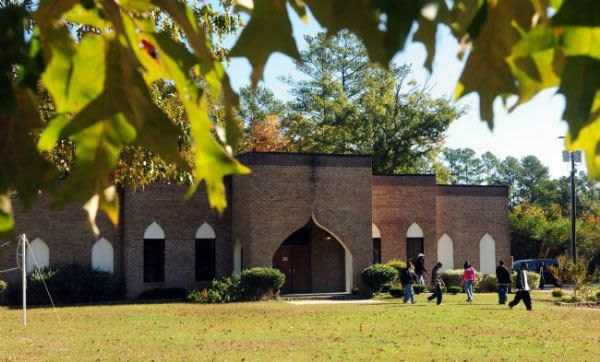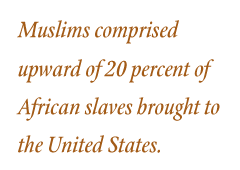 |
 |
| Photo: Masjid Omar ibn Sayyid | Adam Beyah, Imam Photo:Saudi Aramco |
Location: 2700 Murchison Rd. Fayetteville, NC 28301
“A few years ago, Adam Beyah, a member of a Fayetteville mosque named the Masjid Omar ibn Sayyid, drove about an hour south to the small town of Bladenboro, where “Owen Hill”—Said’s plantation—had been located. Beyah and his companions were seeking Said’s grave, but they found that the plantation had disappeared, covered over by smaller, subdivided properties. “We were driving down the street, and we saw a lady in the yard,” says Beyah. “We pulled over and she asked what we were looking for. We told her, ‘Omar.’ She said, ‘Oh, you’re talking about the Prince?’”
 She pointed Beyah to a nearby property, which they explored until they found “remnants of an old house and some grave stones,” says Beyah. “I’m not going to say it was Omar’s grave. I don’t know whose grave it was.”
She pointed Beyah to a nearby property, which they explored until they found “remnants of an old house and some grave stones,” says Beyah. “I’m not going to say it was Omar’s grave. I don’t know whose grave it was.”
According to research by Thomas C. Parramore, a North Carolina historian and professor who died in 2004, Said’s tombstone, which read “Omar the Slave,” disappeared many years ago. Today, people who want to honor his life often come to the Masjid Omar ibn Sayyid, where Beyah or others can show them Said’s daguerreotype and tell his story.” https://archive.aramcoworld.com
Resources
Curiel, Johnathan. “The Life of Omar ibn Said.” Saudi Aramco World. March/April 2010: 34-39. https://archive.aramcoworld.com. Accessed 10/15/2020.
